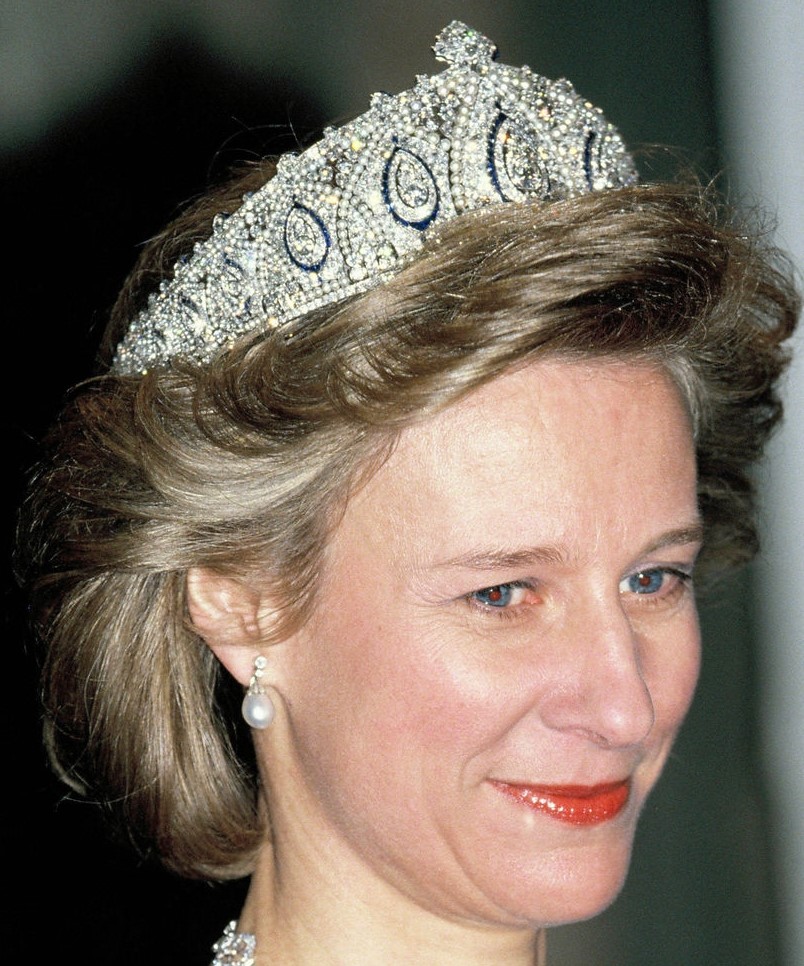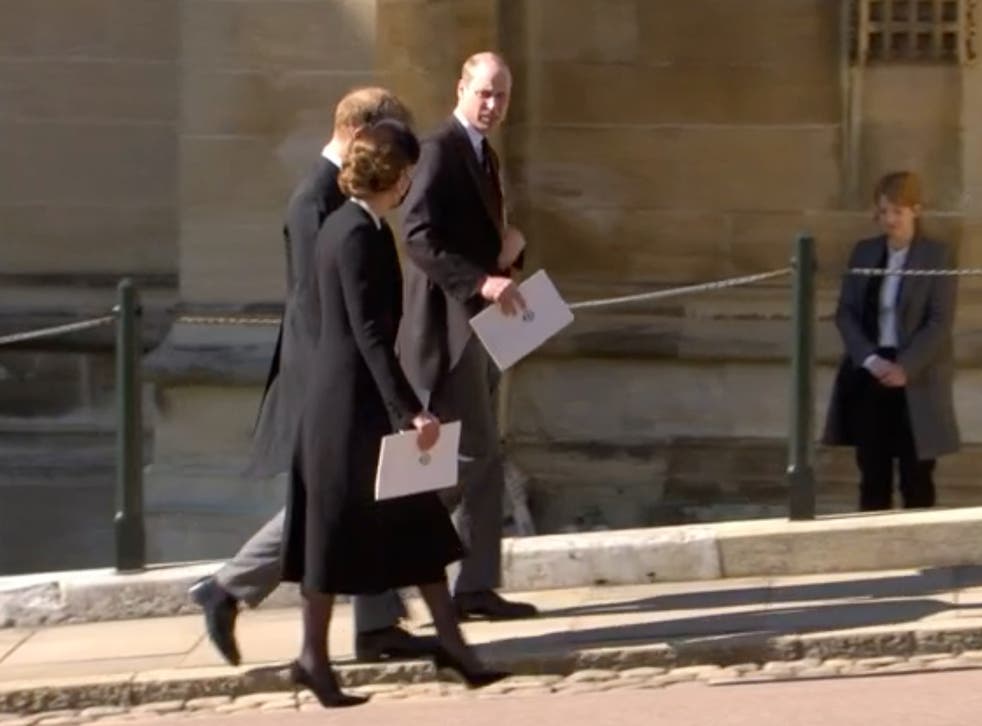The Cartier Indian Tiara: A Forgotten Treasure of the Gloucesters

In a royal world glittering with jewels that have adorned queens and princesses for centuries, some tiaras shine more quietly in the shadows. Overshadowed by the Cambridge Lover’s Knot or the Girls of Great Britain and Ireland, these lesser-known pieces rarely reach the public gaze, yet they carry stories just as rich and histories just as captivating.
Among them is the Cartier Indian Tiara, a breathtaking jewel that many jewelry historians argue could rival some of the most celebrated tiaras in the Crown’s collection. Belonging to the Gloucester family, it is a piece steeped in artistry, symbolism, and personal legacy.
Cartier’s Creation
Crafted around 1923 by Cartier, the tiara is a masterpiece of platinum and diamonds, enhanced originally with aquamarines, sapphires, and pearls. Its design draws inspiration from the elaborate patterns of
Unlike many tiaras that follow strictly European traditions, the Cartier Indian Tiara was conceived to evoke the exotic, reflecting a time when global influences began reshaping fine jewelry. Its structure is bold, geometric, and intricate—perfectly in step with the roaring twenties’ love of innovation.
A Princess’s Choice
The tiara’s royal story began in 1937, when Princess Marie Louise, a granddaughter of Queen Victoria, purchased it from Cartier. She acquired it specifically to wear at the
Though the tiara originally featured aquamarines, Princess Marie Louise later replaced them with diamonds, increasing its brilliance. She wore the piece regularly, both at public events and in official portraits, ensuring its place as one of her signature adornments.
A Life Without Heirs
Marie Louise’s personal story was one of duty rather than domesticity. She never married in the traditional sense and had no children. Instead, her life was defined by her close ties to her royal cousins and her commitment to public service.
When she passed away in 1956, she ensured the tiara would not vanish into obscurity. In her will, she left the Cartier Indian Tiara to her godson, Prince Richard of Gloucester
The Gloucester Duchess’s Icon
When Prince Richard married Birgitte van Deurs in 1972, the tiara gained new life. As the Duchess of Gloucester, Birgitte made the Cartier Indian Tiara her own, wearing it to countless state banquets, diplomatic receptions, and official portraits.
The tiara became so associated with her that many in royal circles began to think of it less as a loaned piece of history and more as a personal trademark. The Duchess’s statuesque frame and elegant style suited its architectural lines perfectly.
A Generous Lender
Birgitte’s stewardship of the tiara extended beyond personal use. In recent decades, she has generously lent it to Cartier for exhibitions, allowing thousands to admire its craftsmanship up close.
Its most recent loan has placed it on display at the Victoria and Albert Museum in London, where it will remain until November 2025. Visitors to the exhibition can marvel at the tiara under carefully calibrated lighting that reveals every shimmer of its diamonds and every trace of its Art Deco inspiration.
A Fragile Future
Despite its history and beauty, the tiara’s future on the public stage is uncertain. The Gloucester children—none of whom hold official senior roles within the royal family—are unlikely to showcase it at state occasions. This has sparked concern among royal jewelry enthusiasts that the tiara may soon retreat permanently into private life, rarely to be seen again outside exhibitions.
Still, there is hope. The Gloucester line may yet provide future brides who will don the tiara on their wedding days, reviving its sparkle for a new generation. And as long as the Duchess continues to lend it for exhibitions, the Cartier Indian Tiara will remain available to the public eye, at least in curated spaces.
Why It Matters
The Cartier Indian Tiara is not just another jewel. It is a reminder of the monarchy’s breadth—its connections beyond the immediate line of succession, its stories of godchildren and distant cousins, its quiet custodians like the Gloucesters who preserve pieces of history without fanfare.
It also highlights how jewelry, far from being mere decoration, carries layers of meaning. This tiara has traveled through eras of change, through the coronation of one king, the passing of a princess, and into the steady hands of a family that keeps tradition alive outside the main spotlight.
A Jewel of Both Past and Present
As visitors stream through the V&A in London over the next year, they will pause before the tiara’s case, captivated by its shimmer. Few may know its full story, but they will sense what it represents: a fusion of global design, royal heritage, and enduring beauty.
For those who follow royal jewels closely, the Cartier Indian Tiara is more than a sparkling ornament. It is a living relic, a conversation between East and West, between past and present, between the duty of preservation and the allure of spectacle.
And whether it graces a future Gloucester bride, or rests under glass at exhibitions, its story will continue to dazzle—as quietly, and as powerfully, as ever.
Kate Middleton’s Quiet Rise, Camila’s Fading Crown: A Royal Shift Unfolding


The British monarchy has always lived and died by symbols. Crowns, titles, robes, and rituals have carried the weight of centuries. But today, the strongest symbols are not spoken from balconies or declared in press statements. They are whispered in the silence of Westminster Abbey, revealed in the tenderness of public duty, and etched in the people’s perception of two women whose stories now define the crown’s evolution:
A Silent Shift of Power
Kate’s rise has not been loud. She has never demanded the spotlight, never sought the applause. Yet every quiet initiative, every meaningful engagement, has pulled the public closer. In her, they see not just royalty but relatability. Her work in mental health, childhood development, and maternal care shows a modern royal who does not hover above the people, but walks among them.
Camila, by contrast, earned her place through endurance. For decades, she stood in the shadows—vilified, mistrusted, branded as the “other woman.” Her eventual recognition as Queen Consort was less a fairy tale than a hard-won compromise, one born out of Charles’s persistence and Elizabeth II’s quiet pragmatism. She became queen not by overwhelming affection, but by resilience.
And yet, while Camila has the crown, Kate holds something even more elusive: the nation’s heart.
The Title That Waited
The mantle of Princess of Wales carries a ghost with it—Diana’s. For years, the title was left untouched, as if encased in glass. Camila never dared to wear it, and the palace knew better than to provoke public grief.
Then came Kate. She stepped into the name not to replace Diana, but to redeem the role. The public, scarred by the past, offered her their trust. Quietly, she earned it. Each appearance, each carefully chosen cause, was another stone laid in the bridge between Diana’s memory and the monarchy’s future.
Elizabeth’s Vision
Behind this shift lay Queen Elizabeth II’s foresight. The late monarch saw in Kate not only William’s wife, but the future of the institution itself. Elizabeth’s mentorship was not loud—it came in private conversations, in shared duties, in subtle encouragements to lead.
It was the Queen’s way of ensuring the monarchy could adapt without breaking. And she knew that Kate, with her balance of tradition and modernity, could become its anchor.
Camila may have been granted a crown, but Kate was entrusted with something more powerful:
Two Journeys, One Future
Camila’s journey will always be marked by survival. From scandal to scepticism, she endured. She embodies the cost of love and the resilience needed to remain standing inside an unforgiving system.
Kate’s journey, however, is one of transformation. From commoner to princess, she has rewritten what it means to belong to the crown—not by blood, but by example. She is the embodiment of a monarchy learning to bend instead of break.
Together, their contrasting stories form a mirror of the monarchy’s crossroads. Camila reflects its battles for legitimacy. Kate reflects its chance at renewal.
The Crown in Transition
The monarchy is no longer unquestioned. The public demands transparency, authenticity, connection. And in this new world, Kate shines not as a shadow of Diana, but as her own force—steady, compassionate, unshaken by scandal.
Camila’s crown is real, but Kate’s crown is symbolic—and symbolism, in the monarchy, is everything.
The future of the British throne may still rest with kings, but its survival depends on queens—one forged by endurance, the other by evolution. And as the world watches, it’s Kate’s quiet storm that seems destined to define the next chapter.








